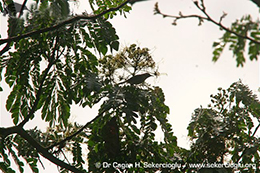About
Pulitzer’s Longbill is a very elusive bird, favouring dense understorey growth.
Not much is known about this species’ breeding habits or ecological needs. This species is part of the Macrosphenus genus, which diverged from all other genera within the Macrophenidae family 23.7 million years ago. Unfortunately, this species habitat is severely fragmented, with until the 1970s, an estimated 95% of forest on the escarpment under coffee production. However, now this has been largely abandoned and subsistence agriculture is a threat. Slash and burn practices are used and the fires are uncontrolled which is another major threat to this species. Agricultural intensification and infrastructure development has led to large clearance of dense undergrowth and vine tangles which is the primary habitat for this species. A protected area at this species range at Chongoroi was recommended in the early 1970s, but this has not been established yet
- Order: Passeriformes
- Family: Macrosphenidae
- Population: 1,500-3,800
- Trend: decreasing
- Size: 13cm
EDGE Score
Distribution
This species found from the escarpment of western Angola.
Habitat and Ecology
This species is found in dry evergreen forest, secondary growth and abandoned coffee plantations at 800-1,300 metres above sea level. This species is dependent on dense liana and vine tangles and thickets. It feeds low down, near the ground, on insects.


